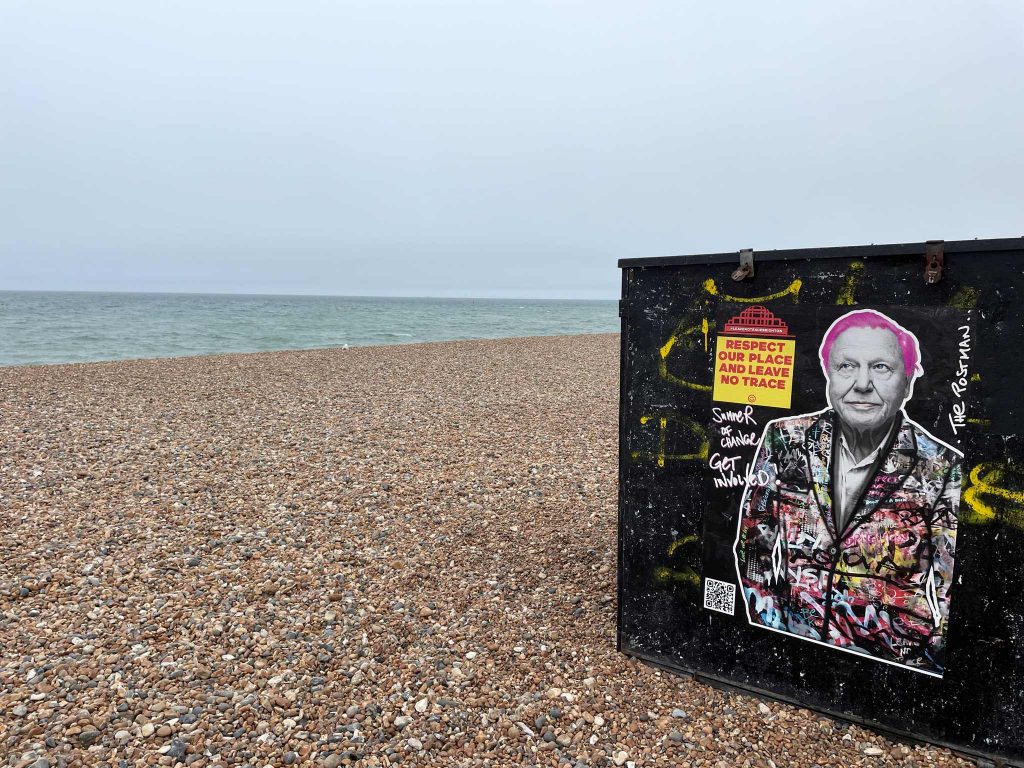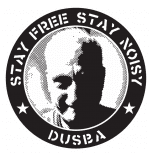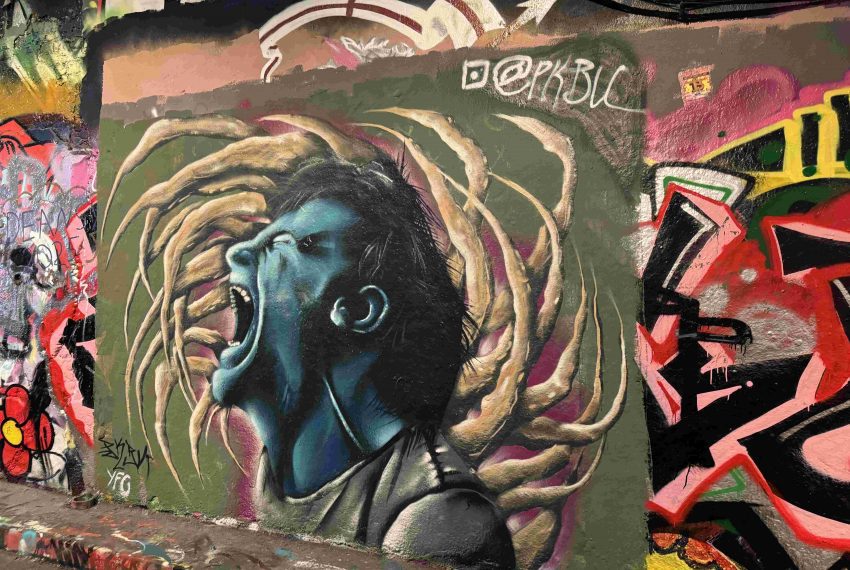A visit to London almost always includes its iconic sights. Everyone wants a photo in front of Big Ben, others dream of strolling through Hyde Park or exploring one of the city’s many famous galleries and museums—most of which offer free entry.
But if you’re interested in discovering lesser-known spots and a more alternative side of London, here are a few tips just for you.
Brick Lane
This vibrant street lies just a short walk from Aldgate East station in East London. Its history goes back nearly 500 years. Today, it’s at the heart of the Bangladeshi and Indian communities—but also a massive open-air gallery of street art.
Artists from around the world have left their mark here. You’ll find works by Banksy, such as the monkey on the bridge spanning Brick Lane from his 2024 animal series. There are also murals by Stik, striking animal imagery from Belgian artist ROA, and a portrait of Audrey Hepburn by French artist Zabou. Look carefully among the waves of colors and shapes, and you’ll spot pixel mosaics by Invader—a French artist inspired by retro video games.
Feeling hungry after your urban culture fix? The area boasts an abundance of excellent Bangladeshi and Indian restaurants (note: many are run by Muslims, so alcohol isn’t served). But plenty of local bars and pubs will happily oblige if you fancy a drink.
Not in the mood for curry? Be sure to stop by the legendary Jewish bakery Beigel Bake, open 24 hours a day. Their Salt Beef Beigel is a world-famous delicacy and truly a must-try.
Also worth a visit is the cult record store Rough Trade East, packed with an endless array of vinyl. The independent label was founded in 1978, with early releases including singles by Cabaret Voltaire and Stiff Little Fingers, and was one of the first stores to start selling The Clash records in the late ’70s.
Brick Lane is also full of second-hand shops and bric-a-brac stores. On weekends, there’s a bustling street market with more than 200 stalls.
Leake Street Tunnel
Once you’ve snapped your Big Ben selfie, just cross the bridge to the other side of the Thames and you’ll find another iconic spot in London’s graffiti scene.
The Leake Street Tunnel is completely covered in street art. As you step inside, you’ll be transported into a magical world of visual imagination. It’s a sensory trip all on its own (even more so, perhaps, with a joint… though with LSD, you might not find your way back 😊).
Kew Gardens
If you’re craving a break from London’s constant buzz, head southwest to the Richmond district, home to the Royal Botanic Gardens, Kew, founded in 1759.
I’ve personally always preferred zoos over botanical gardens—except in London. The city’s zoo simply can’t compare to Prague’s, and frankly, I find it a waste of money. But Kew is magnificent. Spanning vast grounds, its enormous greenhouses house plant life from across the globe.
It’s also an ideal place to relax. Grab a seat on the grass and enjoy a moment of rare tranquillity in London. Stroll along manicured paths and admire art installations like The Hive—a fascinating, immersive structure inspired by bees, created by British artist Wolfgang Buttress. I won’t spoil the experience by explaining—it’s something to feel with all your senses.
Eel Pie Island
A true hidden gem—even many Londoners don’t know about it. Eel Pie Island is a small island on the Thames, less than four hectares in size, also in Richmond.
In the 1960s, it was home to Britain’s largest hippie community, centered around a local hotel that hosted legendary bands like The Rolling Stones, The Who, The Yardbirds, and Pink Floyd. The hotel closed in 1967, marking the end of the flower power era. It briefly reopened in 1969 with performances by Black Sabbath and Genesis, and was even occupied by a group of anarchists. Its final chapter came in 1971 when it burned down under mysterious circumstances.
Today, around 100 people live on the island, many of them artists. It’s accessible only via footbridge from Twickenham Embankment and is closed to the public most of the year.
Exceptions are two weekends in summer—typically in late June and early July—and one weekend in December. Entry is free, but a time-slot reservation is required. During these open studio days, local artists invite visitors into their workshops and offer their creations for sale.
More info here: OPEN STUDIOS | Eel Pie Island Artists
Brighton
And if you’re looking to truly escape London, hop on a train and in about an hour you’ll find yourself in the seaside city of Brighton. With nearly 300,000 residents, the pace here is notably slower than in the capital. The winding lanes filled with pubs, bars, and cafés—especially in the The Lanes quarter—feel cozy and welcoming.
Brighton is widely recognized as a hub of ecological activism, civic engagement, and inclusivity. Brighton Pavilion was the first UK constituency to elect a Green Party MP, and the city remains a stronghold for progressive politics. It’s also one of the most LGBTQIA+ friendly places in Britain, with transgender representatives elected to the local council—a national first.
The city is home to many artists. Among its most famous residents is Nick Cave, who you might be lucky enough to spot in person. Other notable locals include Fatboy Slim and David Gilmour of Pink Floyd. Actress Cate Blanchett and singer Adele have also lived here, and punk legend Charlie Harper enjoys retirement in nearby Seaford. From the younger punk scene, Brighton-based Bar Stool Preachers are worth a mention.
In scorching summer weather, though, it’s best to avoid Brighton. Tens of thousands of Londoners descend on its beaches, and population density rivals—and sometimes exceeds—that of London… bordering on Calcutta levels of crowding.
Every June, Brighton also hosts the legendary Great Skinhead Reunion—a three-day gathering of skinheads from across the UK and beyond, featuring Oi!, ska, reggae, and punk bands. The atmosphere? Absolutely unforgettable.



